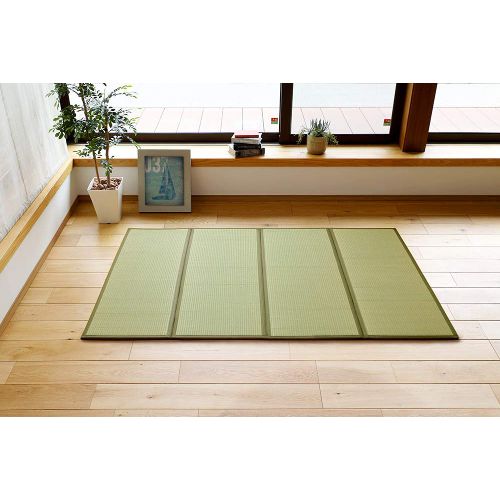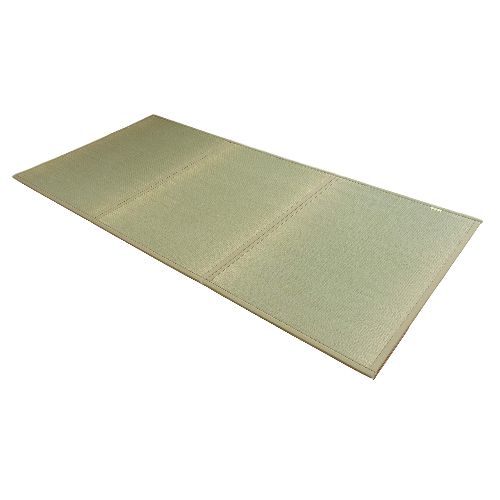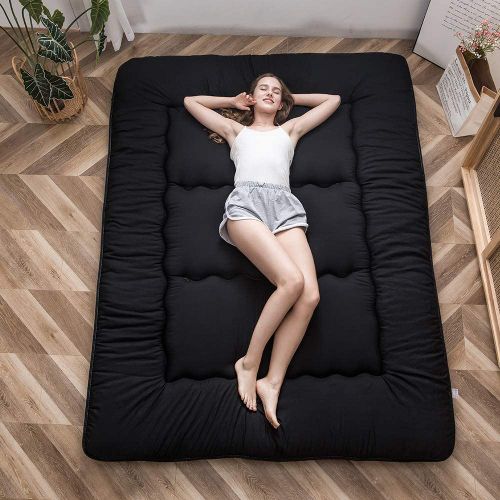Unlock New Levels of Quality and Comfort with a Japanese Mat
Most Japanese mats are built for comfort but the traditional aesthetic it brings is beyond compare. That's why we found the best mats for you!

Are you looking for a way to upgrade your sleep experience?
Japanese mats are the perfect solution. They provide superior comfort and quality, making them an ideal choice for anyone who wants to get the best night's rest possible. Our expert review will help you understand why these mats are so popular and how they can improve your sleep quality.
With a Japanese mat, you'll be able to enjoy a level of comfort that is simply unmatched by any other type of mattress or bedding product on the market today. Plus, with its breathable material, you won't have to worry about overheating at night!
Read our expert review now and find out if a Japanese mat is right for you!
How We Found The Best Japanese Mats
Shopping for a mat or bedding product can be overwhelming and time-consuming. With so many options, it's hard to know which one is the best choice for you.
You want something that will provide superior comfort and quality, but how do you know what to choose? Reading thousands of reviews takes too much time and effort.
We read thousands of reviews to find you the best selection of Japanese mats! Our review will help you understand why these mats are so popular and how they can improve your sleep quality. With a Japanese mat, you'll be able to enjoy a level of comfort that is simply unmatched by any other type of mattress or bedding product on the market today. Plus, with its breathable material, you won't have to worry about overheating at night! Read our review now and find out if a Japanese mat is right for you!
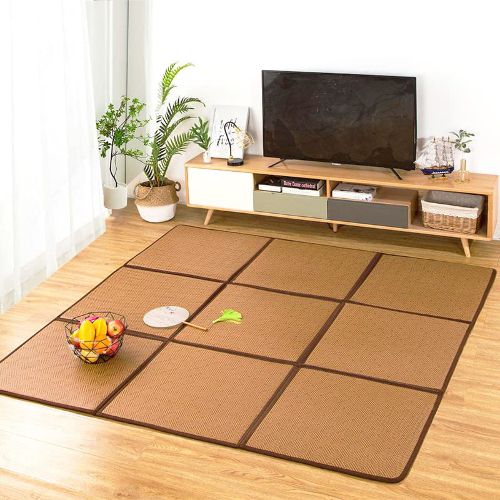
Nisorpa 71'' x 71'' Japanese Rug Tatami Rug Mat 0.47'' Thick Japanese Floor Mattress
What We Like Most
- Super soft and comfortable – perfect for napping, lying down, or playing on the floor
- Thin design makes it easy to move around and store when not in use
- Made of natural materials so it is environmentally friendly and biodegradable
- Durable construction will last for years
What You Should Know
Looking for an attractive and comfortable mat? Look no further! This amazing Japanese mat is designed purposely to provide not just aesthetic pleasure but comfort as well.
It's made of high quality natural rattan fiber, letting you experience a smooth and flat surface. Comfort-wise, it's packed with soft breathable high density foam that keeps your feet warm and cozy.
Even better, the special non-slip bottom design prevents it from moving while you enjoy its elegant and modern fashion decor. With this mat placed in your home, you'll have total control over your stylishness and comfort level at the same time.
What We Like Most
- Uses 100% Rush Grass for a natural, healthy sleep environment.
- The rush grass helps to regulate humidity and temperature for a more comfortable sleep.
- Tatami mats are non slip which makes them ideal for use as mattresses or flooring.
- Tatami mats have a pleasant, fresh smell that is reminiscent of freshly cut grass.
What You Should Know
Both French and Japanese cultures share a plethora of lovely qualities, including the ability to merge modernity and tradition.
This Japanese mat is the perfect example of that harmony; it is comfortable, natural, and practical all at once. Its simple design makes it incredibly versatile too - you can use the mat for seating purposes or even for an afternoon nap -allowing maximum utility with minimal fuss.
This mat embodies a minimalist principle perfectly - it serves multiple functions without overcomplicating things or taking up too much space.
If you're looking to make your home more traditional-modern but don't want to invest in bulky furniture, this Japanese mat might just be the perfect addition.
What We Like Most
- Regulate humidity
- Made from a natural, sustainable material
- Provide firm cushioning for comfort and stability
- Look, smell, and feel like traditional Japanese rugs
What You Should Know
Japanese tatami mats are amazing things – not only do their rush straw material provide natural humidity control and air purification, allowing for fresher air in the room, but it also does an excellent job at managing sweat and odor.
That’s right – no more worrying about embarrassing smells as you sleep; just lay down on your Japanese mat and enjoy the clean night’s rest!
Not to mention, thanks to its hard mattress, you can keep your back and body straight while sleeping and even ensure that your spine is neutral – comfy yet supported all at once. If that isn’t something worth talking about, I don’t know what is!
What We Like Most
- Comes in multiple colors to match your decor
- Can be used as Bedroom Futon Tatami Mat
- Extremely comfortable and perfect for sleeping on a modern tatami mat
- Great value for the price
What You Should Know
If you haven't heard of the amazing Japanese mattress, it's time to take note! This innovative mattress is designed to make life easier with its ability to roll up and store.
Not only that, but the mattress also adds an extra layer of comfort when placed on top of a Japanese mat.
Perfect for those who need extra sleeping space for travel or unexpected guests! So why wait? Get your very own Japanese mattress today and enjoy a better night’s sleep!
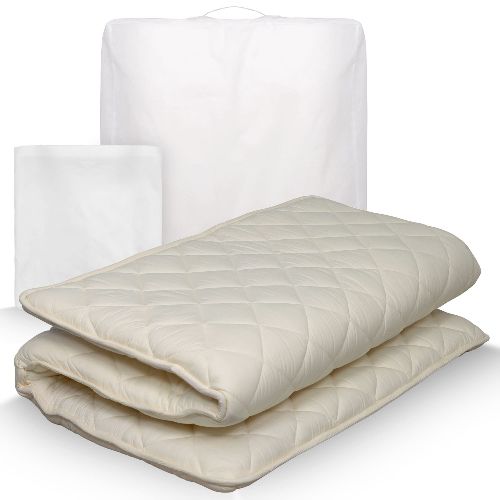
Kuya Japanese Mat Futon Floor Mat for Adults & Kids - Premium Japanese Shikibuton Cotton Sleep Mat
What We Like Most
- A comfortable sleep surface for both children and adults
- Supportive and conforming foam cushioning
- Easy to clean and maintain
- Compact storage – the futon cover can be used as a storage bag
- Durable and long-lasting
What You Should Know
If you're looking for a long-lasting, multi-purpose solution to your sleeping needs, the Kuya Futon is the answer!
Its three layers of Polyester, Polyurethane and Memory Foam offer unparalleled comfort and support which means you can rest easy no matter where you are - whether that's at home as a mattress or on your next camping trip.
Not only that but it comes with an easy-to-carry storage bag so you can make sure to bring your futon with you on any adventure. So why not get the most out of your sleeping experience by investing in a Kuya Futon today?
Most Commonly Asked Questions Around Japanese Mats
Buying a Japanese mat can be confusing because of all the different types and materials.
It's hard to know which type of Japanese mat is best for you, and there are a lot of choices to make when it comes to material, size, and color.
We've answered the most commonly asked questions about Japanese mats so you can easily choose the perfect one for your needs. Most mats are made from natural materials like bamboo and cork, come in a variety of sizes, and are available in several colors.
What is a Japanese straw mat called?
In Japan, a straw mat is known as tatami. It is a traditional flooring material made from woven strips of rush grass and rice straw that has been used in Japanese homes for centuries. Tatami mats are typically rectangular or square shaped and come in two sizes: goza (smaller) and ogara (larger).
The actual dimensions vary slightly depending on the region of Japan where they are produced, but generally smaller mats measure around 91 cm by 182 cm and larger ones measure around 182 cm by 274 cm. In addition to being used as floor covering in residences, tatami have also traditionally been used for religious ceremonies, tea ceremonies, martial arts practices, wrestling matches, judo competitions, sumo tournaments and other purposes.
Why do Japanese use tatami mats?
The distinct style and design of Japanese tatami mats are designed for functionality and comfort. Traditionally, tatamis were used in homes to separate areas of the house into different sections or rooms without walls. Tatamis also provided comfort by providing a soft surface for those who needed to sit on the floor.
Beyond the traditional use in homes, tatamis are still used today in many places such as temples, shrines, restaurants, theaters and other public spaces. There’s even a variation of this mat specifically designed for martial arts called judo-tatami. This type is thicker than most other mats making it more resistant to wear and tear over time so that it can last longer with repeated use during practice sessions.
In short: Tatami Mats provide functional separation within living spaces while offering comfortable cushioning from the hard floors beneath them; they are widely used throughout Japan both in private residences and public places which gives them symbolic meaning related to respectfulness; finally their textured surfaces & ordered layouts give guests an inviting atmosphere perfect for zen meditation or contemplation.
If you have the good fortune to find yourself in a traditionally constructed Japanese home with paper doors you will see an aesthetic not seen by most in the west.
What happens if tatami gets wet?
Wet tatami can encourage the growth of mold and mildew, as well as damage the fibers in the mat. Additionally, if not dried properly, they may start to let off an unpleasant musty smell. The best way to deal with wet tatami is to make sure they dry quickly by opening windows or using fans. If you notice any discoloration or mold spots on your tatami mats then it’s time to replace them!
Do tatami mats get bugs?
While there is no guarantee that bugs will not get into a Japanese mat, it is possible to reduce the risk of an infestation by keeping the humidity and temperature inside your home at a comfortable level.
The first step is to vacuum the mat regularly and store it away from areas where insects may be lurking. If necessary, you can use insect repellent on any cracks or crevices in the mat as well as around its perimeter.
Additionally, ensuring that all food crumbs or other particles are properly disposed of will make it harder for bugs to access these resources within your home. Finally, if needed you can also contact a professional exterminator who can help identify areas where bugs may enter into your home and provide advice on how best to deal with them.
What are the cons of tatami bed?
Tatami beds have several drawbacks that should be considered before making a purchase. Firstly, their mattresses are often much thinner than conventional beds and can lead to a less comfortable sleep experience.
Additionally, tatami bed owners need to factor in regular maintenance as the mattresses must be vacuumed and re-crafted regularly to keep them in good condition. Finally, due to their traditional design some construction materials used for these type of beds may not meet modern safety standards.
What is the lifespan of a Japanese mat?
On average, a Japanese mat (also known as tatami) will last about 10 to 15 years depending on its usage and care. Tatamis are typically made from high quality materials such as woven rush grass and other natural materials like cotton or paper fibers, which provide the unique structural properties required for a comfortable sleeping experience.
To ensure maximum lifespan, proper maintenance is essential - this includes regular vacuuming and airing out of the tatami after use to prevent dirt and dust buildup. The tatami should also be adequately protected against humidity by using dehumidifiers or sealing it in impermeable plastic every six months during summer.
Additionally, placing an absorbent rug underneath the mats can help reduce impact wear over time so that your mats remain intact for many years to come!
The Right Japanese Mat for You
There you have it, whether you are in a hot summer or the cold season we have a Japanese mat for you. We read thousands of reviews and searched for the top tier mats for this round up. We hope this article has helped you find the perfect mat for you. Happy Shopping!


